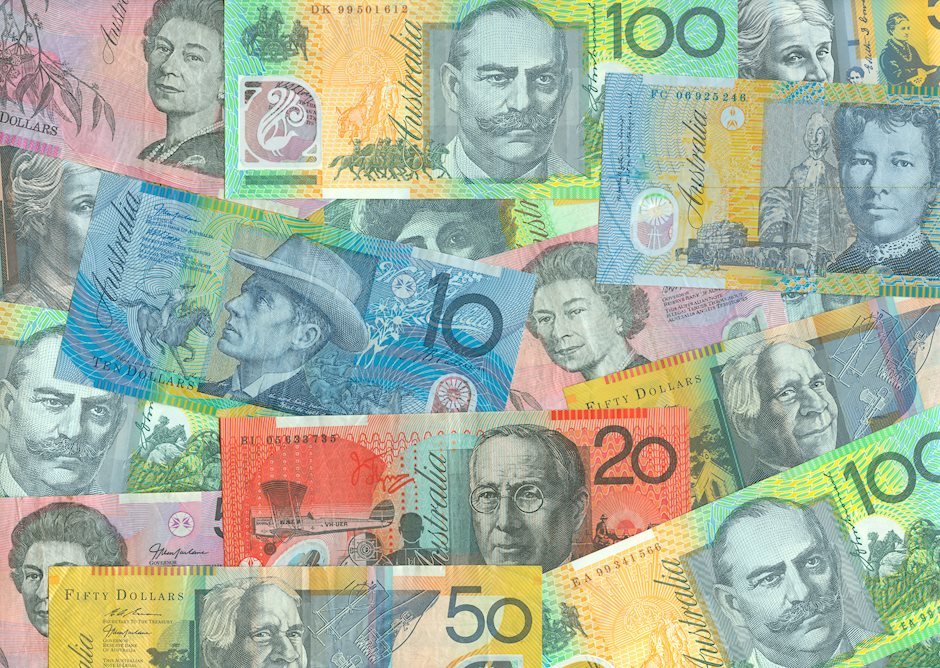Australian Dollar declines due to solid US Dollar amid Trump trades optimism
- The Australian Dollar depreciates as traders adopt caution ahead of the results of the US presidential election.
- The Aussie Dollar could regain momentum as RBA Governor Michele Bullock reaffirmed a hawkish stance on Tuesday.
- Georgia exit polls indicate that Trump holds a 10% lead over Harris, with estimates based on less than 1% of votes counted.

The Australian Dollar (AUD) retraces its recent gains against the US Dollar (USD) on Wednesday as market anticipation builds ahead of the US presidential election outcome. The AUD/USD pair depreciates as the US Dollar (USD) strengthens, driven by increased confidence in Trump trades following the favorable outcome for Republican candidate Donald Trump in the US presidential election.
Polling data indicate a close race between Donald Trump and Kamala Harris, with Trump currently holding an edge. On Kalshi, Trump shows a strong 57% to 43% lead over Harris, while on Polymarket, the gap is slightly wider, with Trump at 60.7% and Harris at 39.5%. These figures reflect growing support for Trump as election day approaches, but the race remains competitive.
Attention will be focused on the Federal Reserve's interest rate decision on Thursday, with markets broadly anticipating a 25 basis point cut. The CME FedWatch Tool currently shows a 96.4% probability that the Fed will lower rates by a quarter percentage point at its November meeting, reflecting strong market consensus for a modest cut this week.
The Aussie Dollar strengthened after the Reserve Bank of Australia (RBA) decided to hold the Official Cash Rate (OCR) steady at 4.35% on Tuesday, marking its eighth consecutive pause. RBA Governor Michele Bullock reiterated a hawkish stance, emphasizing the need for restrictive monetary policy given persistent inflation risks and a strong labor market.
Additionally, Australia’s latest Purchasing Managers Index (PMI) data indicated a positive shift in private sector activity in October. Growth in the services sector helped offset a continued decline in manufacturing.
Daily Digest Market Movers: Australian Dollar depreciates amid market caution ahead of US election results
- Early exit poll results from Wisconsin indicate a lead for Republican candidate Donald Trump, with 56% of the vote compared to 42.5%, based on 7.5% of expected votes counted. In North Carolina, exit polls show a tight race between Trump and Kamala Harris, with 50% of the votes counted. In Michigan, with 12% of votes counted, Harris' lead has shrunk from 61% to 53%.
- Georgia, one of the early states with available exit polls, shows a tilt toward Republican presidential candidate Donald Trump. With its 16 electoral votes, the initial data suggests Trump has roughly a 10% lead over Democratic candidate Kamala Harris, although this estimate is based on less than 1% of the votes counted, as reported by The Washington Post. This early lead suggests momentum for Trump, but with only a small fraction of votes tallied, the final outcome in Georgia remains uncertain.
- Preliminary results from the Pennsylvania exit polls show a lead for Harris, according to CBC News. With approximately 8% of the expected votes counted, Kamala has secured a 71% majority. The state has 19 electoral votes at stake.
- The US ISM Services Purchasing Managers Index increased to 56.0 in October, up from 54.9 in September, exceeding the forecast of 53.8. In contrast, the S&P Global Services PMI registered at 55.0 in October, slightly below both the prior reading and the expected 55.3.
- Australia's Judo Bank Services PMI improved to 51.0 in October from 50.6 in the previous reading, above the market consensus of 50.6. The Composite PMI climbed to 50.2 in October versus 49.8 prior. Caixin China Services PMI also rose to 52.0 in October from 50.3 in September.
- The TD-MI Inflation Gauge rose by 0.3% month-over-month in October, up from a 0.1% increase in the prior month, marking the highest reading since July and ahead of the RBA's November policy meeting. Annually, the gauge climbed by 3.0%, compared to the previous 2.6% reading.
- ANZ Australia Job Advertisements increased by 0.3% month-over-month in October, a notable slowdown from the upwardly revised 2.3% gain in September. Despite slower growth, this marks the second consecutive month of increases.
- China’s Commerce Minister Wang Wentao met with Australia’s Trade Minister Don Farrell on Sunday. China expressed hopes that Australia will continue enhancing its business environment and ensure fair and equitable treatment for Chinese companies.
Technical Analysis: Australian Dollar moves below 0.6600, nine-day EMA
The AUD/USD pair trades near 0.6590 on Wednesday, with technical indicators on the daily chart suggesting a potential continuation of the bearish trend. The pair has slipped below the nine- and 14-day Exponential Moving Averages (EMAs), signaling downward momentum. Additionally, the 14-day Relative Strength Index (RSI) remains below the 50 mark, further supporting a bearish outlook for the pair.
For the AUD/USD pair, immediate support lies near the three-month low at 0.6536. A break below this level could lead the pair toward the critical psychological support at 0.6500.
On the upside, the pair could face resistance at the nine-day EMA at 0.6603, with additional resistance at the 14-day EMA at 0.6620. A breakout above these levels could signal strengthening momentum, potentially targeting the key psychological level of 0.6700.
AUD/USD: Daily Chart
Australian Dollar PRICE Today
The table below shows the percentage change of Australian Dollar (AUD) against listed major currencies today. Australian Dollar was the weakest against the US Dollar.
| USD | EUR | GBP | JPY | CAD | AUD | NZD | CHF | |
|---|---|---|---|---|---|---|---|---|
| USD | 1.59% | 1.03% | 1.38% | 0.55% | 1.30% | 0.96% | 1.07% | |
| EUR | -1.59% | -0.56% | -0.20% | -1.03% | -0.30% | -0.63% | -0.51% | |
| GBP | -1.03% | 0.56% | 0.34% | -0.47% | 0.26% | -0.08% | 0.04% | |
| JPY | -1.38% | 0.20% | -0.34% | -0.83% | -0.09% | -0.45% | -0.32% | |
| CAD | -0.55% | 1.03% | 0.47% | 0.83% | 0.74% | 0.40% | 0.51% | |
| AUD | -1.30% | 0.30% | -0.26% | 0.09% | -0.74% | -0.34% | -0.22% | |
| NZD | -0.96% | 0.63% | 0.08% | 0.45% | -0.40% | 0.34% | 0.10% | |
| CHF | -1.07% | 0.51% | -0.04% | 0.32% | -0.51% | 0.22% | -0.10% |
The heat map shows percentage changes of major currencies against each other. The base currency is picked from the left column, while the quote currency is picked from the top row. For example, if you pick the Australian Dollar from the left column and move along the horizontal line to the US Dollar, the percentage change displayed in the box will represent AUD (base)/USD (quote).
Australian Dollar FAQs
One of the most significant factors for the Australian Dollar (AUD) is the level of interest rates set by the Reserve Bank of Australia (RBA). Because Australia is a resource-rich country another key driver is the price of its biggest export, Iron Ore. The health of the Chinese economy, its largest trading partner, is a factor, as well as inflation in Australia, its growth rate and Trade Balance. Market sentiment – whether investors are taking on more risky assets (risk-on) or seeking safe-havens (risk-off) – is also a factor, with risk-on positive for AUD.
The Reserve Bank of Australia (RBA) influences the Australian Dollar (AUD) by setting the level of interest rates that Australian banks can lend to each other. This influences the level of interest rates in the economy as a whole. The main goal of the RBA is to maintain a stable inflation rate of 2-3% by adjusting interest rates up or down. Relatively high interest rates compared to other major central banks support the AUD, and the opposite for relatively low. The RBA can also use quantitative easing and tightening to influence credit conditions, with the former AUD-negative and the latter AUD-positive.
China is Australia’s largest trading partner so the health of the Chinese economy is a major influence on the value of the Australian Dollar (AUD). When the Chinese economy is doing well it purchases more raw materials, goods and services from Australia, lifting demand for the AUD, and pushing up its value. The opposite is the case when the Chinese economy is not growing as fast as expected. Positive or negative surprises in Chinese growth data, therefore, often have a direct impact on the Australian Dollar and its pairs.
Iron Ore is Australia’s largest export, accounting for $118 billion a year according to data from 2021, with China as its primary destination. The price of Iron Ore, therefore, can be a driver of the Australian Dollar. Generally, if the price of Iron Ore rises, AUD also goes up, as aggregate demand for the currency increases. The opposite is the case if the price of Iron Ore falls. Higher Iron Ore prices also tend to result in a greater likelihood of a positive Trade Balance for Australia, which is also positive of the AUD.
The Trade Balance, which is the difference between what a country earns from its exports versus what it pays for its imports, is another factor that can influence the value of the Australian Dollar. If Australia produces highly sought after exports, then its currency will gain in value purely from the surplus demand created from foreign buyers seeking to purchase its exports versus what it spends to purchase imports. Therefore, a positive net Trade Balance strengthens the AUD, with the opposite effect if the Trade Balance is negative.
Author

Akhtar Faruqui
FXStreet
Akhtar Faruqui is a Forex Analyst based in New Delhi, India. With a keen eye for market trends and a passion for dissecting complex financial dynamics, he is dedicated to delivering accurate and insightful Forex news and analysis.


















